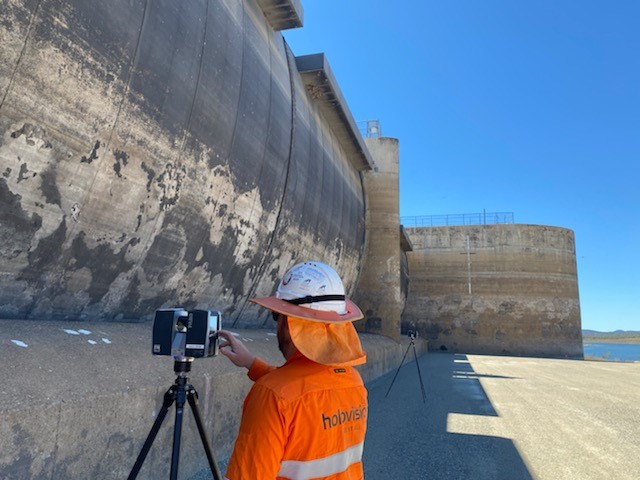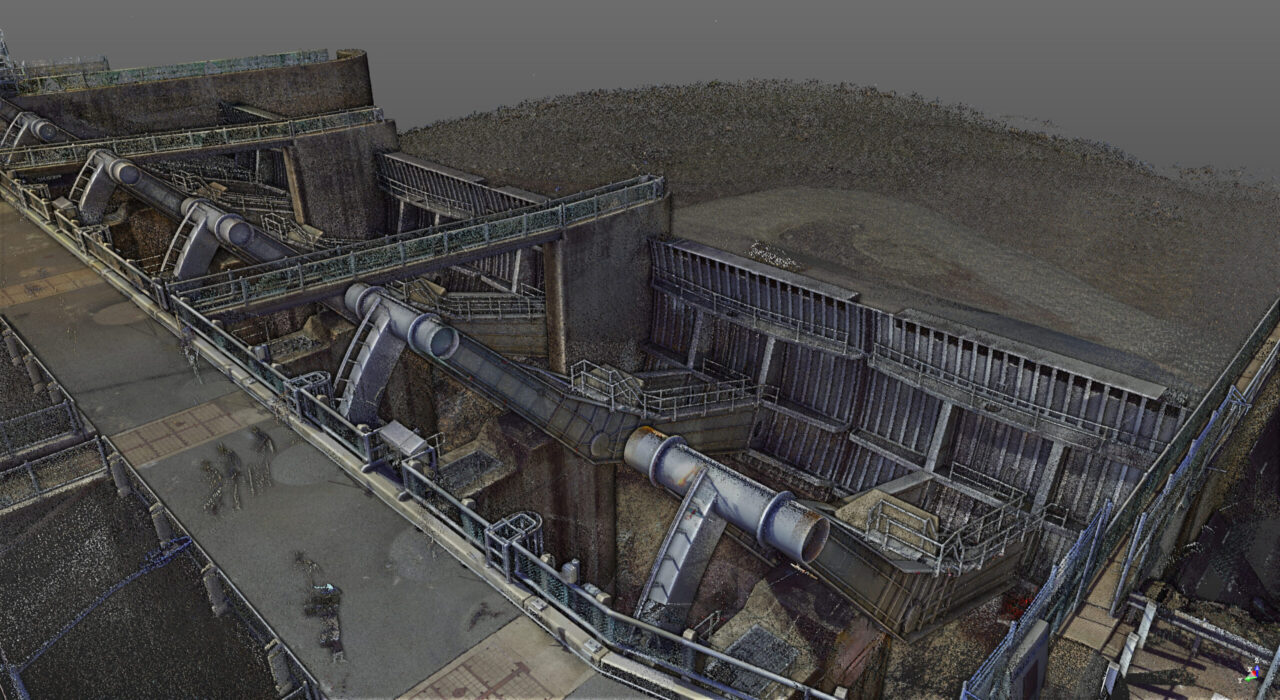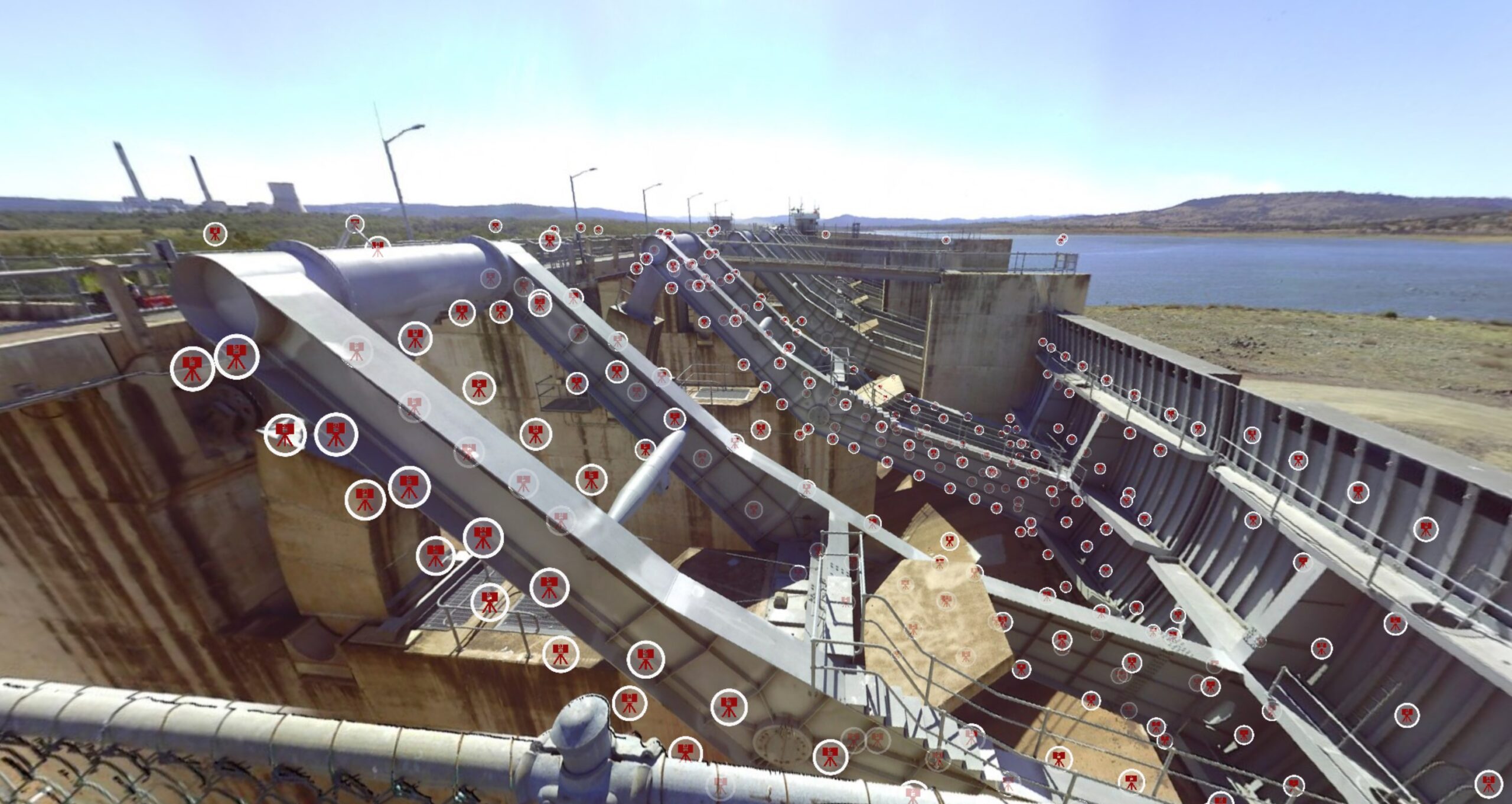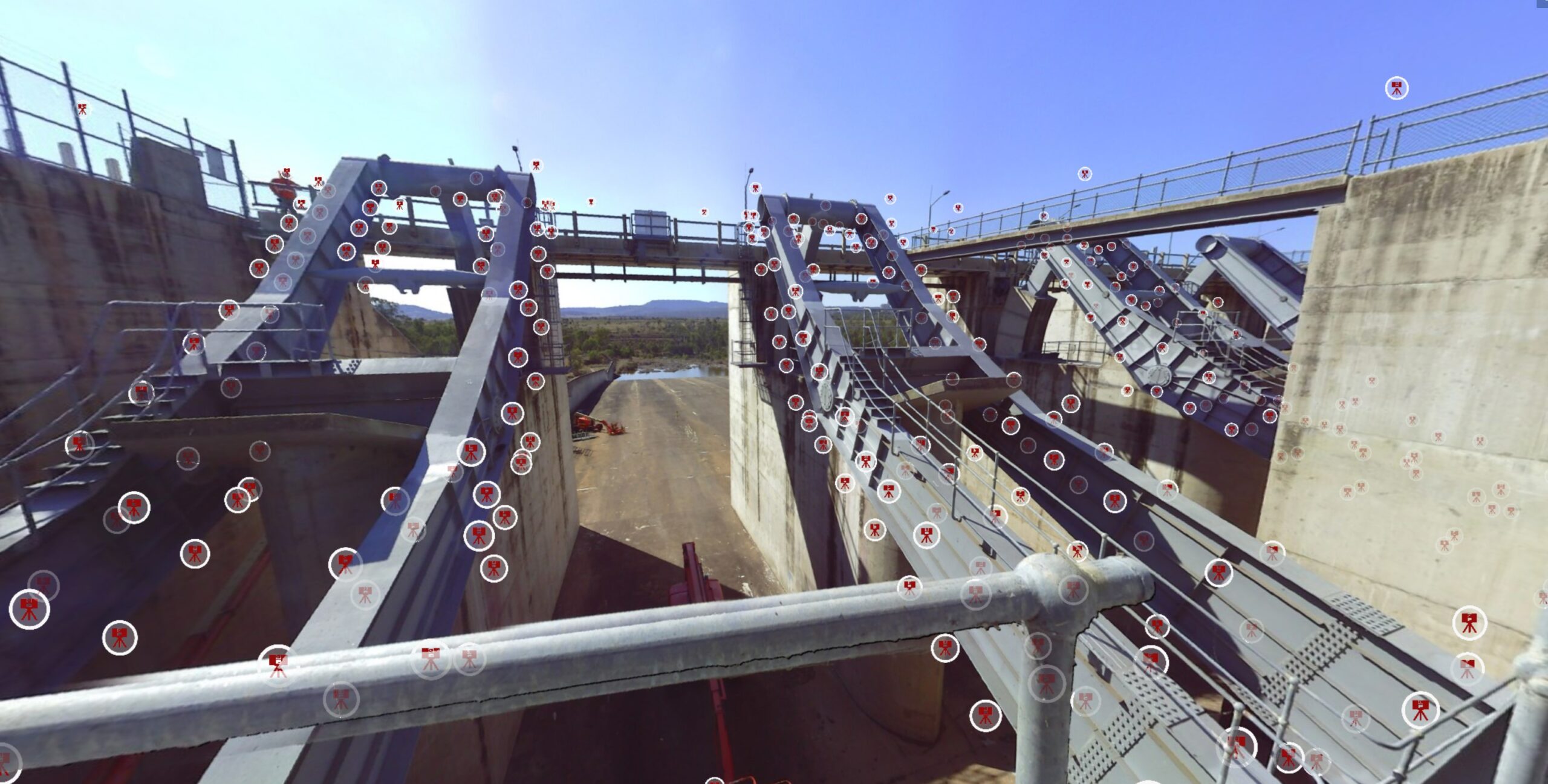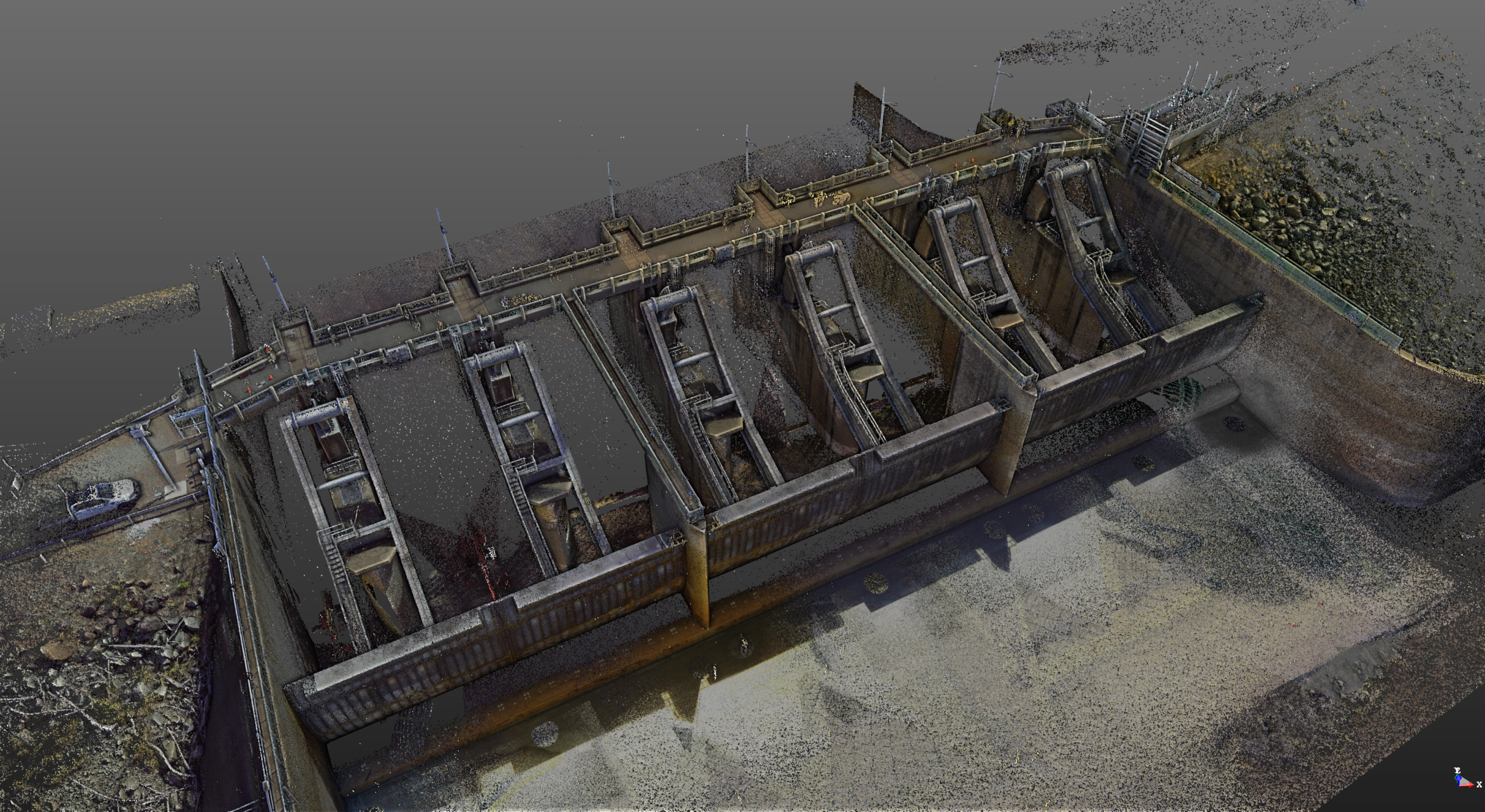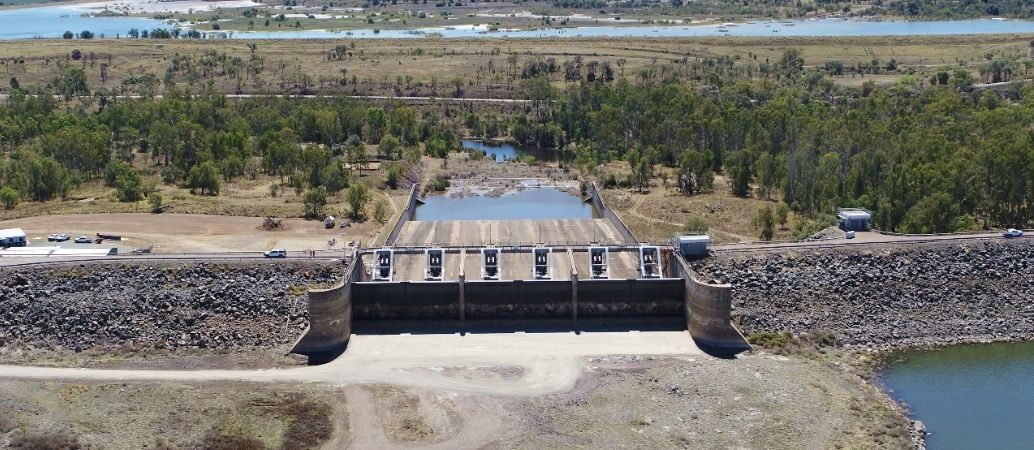
The Callide Dam is one of two zoned earth-fill embankment dams that comprise the Callide Valley Scheme. The scheme, owned and operated by Sunwater, provides water supply to support major industries in the Banana Shire of central Queensland, Australia.
The project required developing risk-informed dam safety solutions to mitigate gate vibration during operations, which had been causing structural damage. Thorough site inspections and assessments were needed to gain a better understanding of the short-term and long-term risks associated with the dam gate vibration.
Holovision was initially engaged to deliver a solution to enable virtual site inspections. The solution consisted of capturing high-definition images and laser scan-point cloud data, which was accessed by engineers via a cloud-based viewing system.
Our team of surveyors also performed survey and remote monitoring during the testing phase, assisting with the analysis and operational assessment of the gates.
